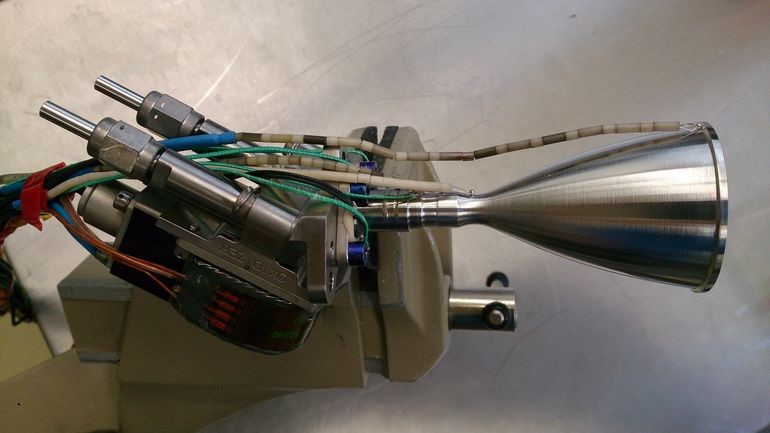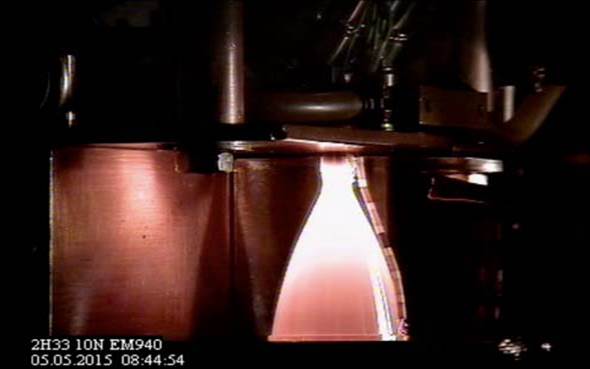
Additive manufacturing a la 3D printing has been all the rave since the debut of consumer-grade 3D printers spotlighted the technology a couple years back, but while consumer-grade printers are extremely limited in function, their giant, industrial-level counterparts are making all manner of wonderful things, including spaceship thrusters.
The European Space Agency (ESA) has just completed the world’s first test of a 3D printed platinum alloy thruster combustion chamber and nozzle, a success that outline’s subtractive manufacturing as a viable option for streamlining production, cutting costs, and bolstering flexibility in the aerospace industry. With the advent of commercial space flight on the horizon, reliance on 3D printing will only grow in the coming years.
“This is a world first,” explains Steffen Beyer of Airbus Defense & Space, managing the project. “The firings included a single burn of 32 minutes, during which a maximum throat temperature of 1253°C (2287 °F) was attained.” The thruster remained active for 618 ignitions, over the course of an hour, demonstrating a performance comparable to that of a standard, non-3D printed thruster.

The 10 N hydrazine thruster combustion chamber and nozzle were printed by spraying layer upon layer of platinum-rhodium alloy using a laser printing machine normally reserved for making jewelry. “The aim was to test this alternative manufacturing method as a way of reducing material costs,” explains Laurent Pambaguian ESA engineer, “at the start we were by no means certain it could be done, or even whether the metal powder could be prepared to the appropriate quality.”
Unlike the subtractive method of 3D printing — which trims layer upon layer of excess material from a solid chunk until a desired shape is eventually sculpted — the additive approach produces significantly less runoff waste, which translates to less expense on behalf of the manufacturer.
Considering the fact that Airbus Defense & Space produces 150 to 200 hydrazine thrusters per year and platinum costs €40 (US$63) a gram, the amount of cost saved amounts to quite a bit.
“This latest success opens the way to further developments,” says Tommaso Ghidini, head of ESA’s Materials Technology section. “We aim to move to other materials, including Inconel and copper, for larger volumes, progressing to kilonewton-scale thrusters for both spacecraft and launchers.”
Platinum-rhodium was selected for the first phase of testing as it is the most mature platinum alloy for additive manufacturing; the next step, however, demands that the ESA and its collaborators print components using platinum-iridium, a more advanced alloy over platinum-rhodium. “This alloy cannot easily be manufactured by traditional techniques like casting and forging, so printing is the only way it can be harnessed for space use.”
Advertisement
Learn more about Electronic Products Magazine





